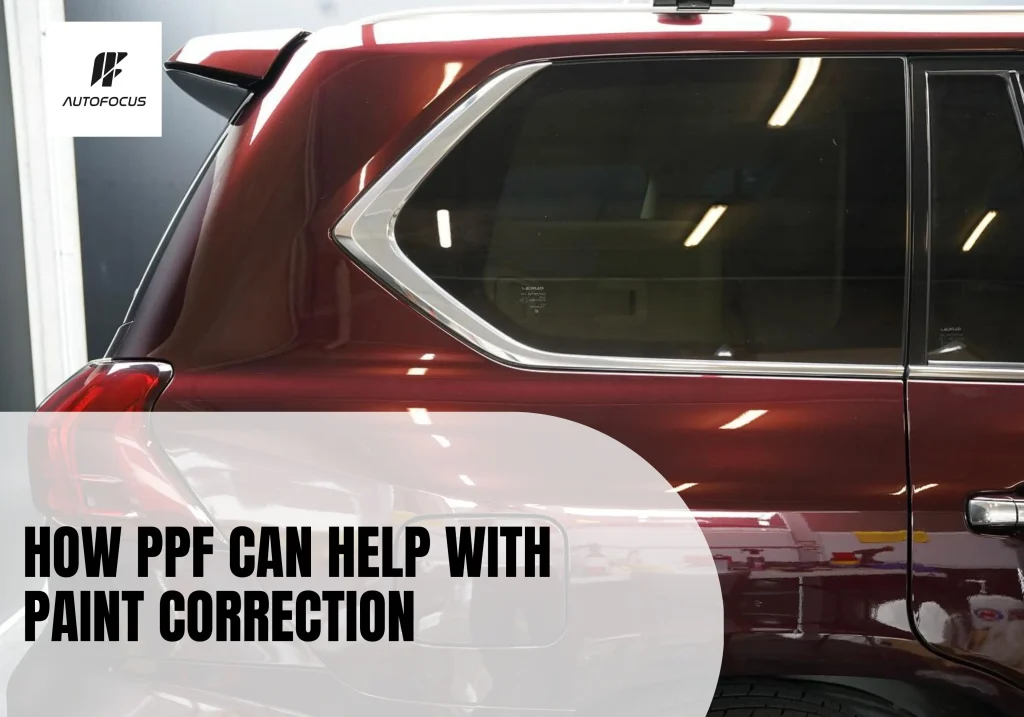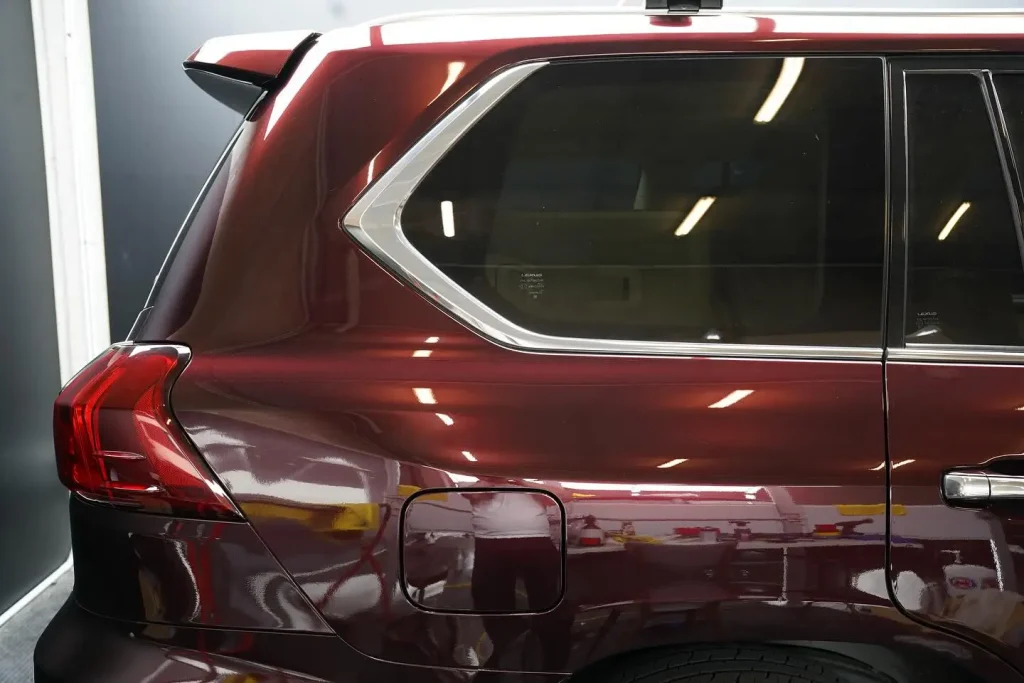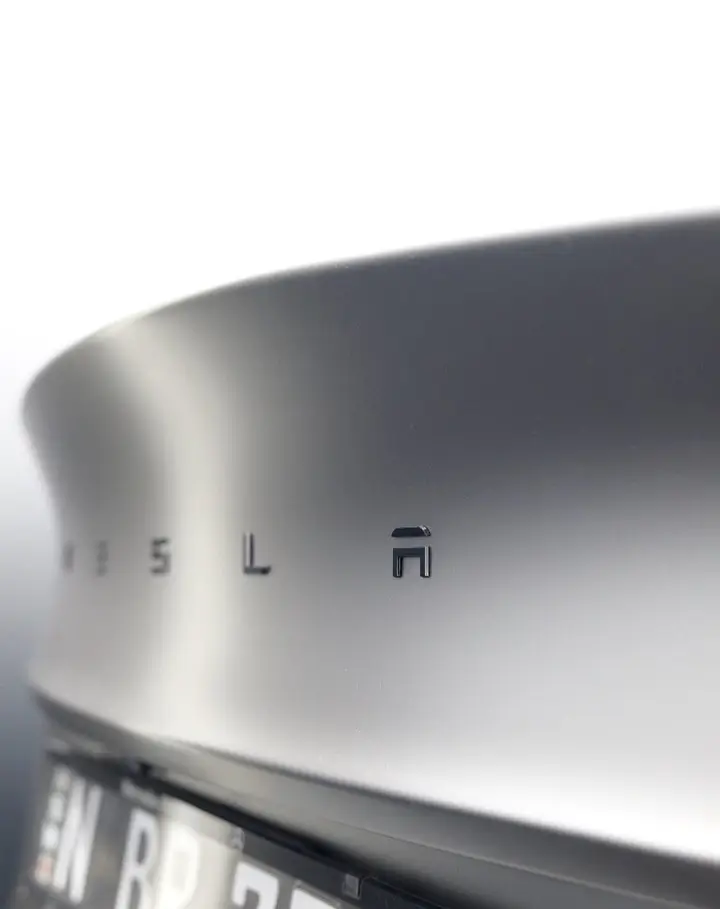
Most luxury car owners believe their vehicle’s paint is invincible until reality strikes. That first major scratch or stone chip isn’t just cosmetic damage—it’s the beginning of an expensive downward spiral that traditional paint correction simply cannot stop.
In Australia’s brutal climate, what starts as minor imperfections rapidly becomes thousands of dollars in recurring repairs, systematically destroying your investment while you watch helplessly from the sidelines. Yet there’s a revolutionary solution that transforms how discerning vehicle owners approach paint protection. Understanding how PPF can help with paint correction isn’t just about fixing existing damage. It’s about preventing the need for costly corrections altogether.
The Shocking Truth About Why Most Paint "Fixes" Fail Spectacularly
The Science Behind Modern Automotive Paint Systems
Modern automotive paint systems feature multi-layered coating systems comprising four to five distinct layers: primer coat, basecoat, clearcoat, and protective treatments. The total thickness typically measures just 95-125 microns—remarkably thinner than previous generations. The clearcoat, providing gloss and the first line of defence, measures merely 20-50 microns thick—thinner than a human hair.
This reduction creates significant vulnerability. Modern eco-friendly paint formulations sacrifice durability for environmental compliance, leaving your vehicle vulnerable to Australia’s extreme weather conditions.
Common Paint Defects That Require Expensive Correction
Research findings reveal devastating impacts of environmental factors on automotive paint systems. Studies on solid particle erosion demonstrate how everyday driving systematically destroys paint coatings through five primary mechanisms:
- Pitting: Small crater-like depressions from high-velocity particle impacts
- Cracks: Stress fractures penetrating through coating layers
- Ploughing: Directional gouges created by abrasive particles
- Flaking: Large-scale coating detachment from substrate surfaces
- Peeling: Progressive layer separation due to adhesion failure
The most alarming discovery involves accelerated weathering. Vehicles exposed to UV radiation and acid rain showed dramatically decreased erosion resistance. Chemical changes induced by weathering weakened molecular bonds, making coatings exponentially more susceptible to damage.
Traditional paint correction addresses symptoms rather than causes. Each polishing session removes material from already-thin clearcoats, creating progressive degradation cycles that ultimately require expensive repainting.
The Revolutionary Shield Technology That Makes Paint Damage Vanish
How Paint Protection Film Works at the Molecular Level
Breakthrough research into polyurethane elastomers reveals extraordinary science behind modern PPF technology. Advanced cross-linking techniques create materials with unprecedented performance characteristics.
The molecular architecture involves controlled cross-linking agents that dramatically enhance properties. Recent studies demonstrate tensile strength improvements of 301% compared to unmodified films. Optimal bonding strength reaches 1.7 MPa whilst maintaining 80% optical transmittance—essential for preserving paint visibility.
The secret lies in phase-separated morphology. Soft segments provide flexibility and impact absorption, while hard segments deliver structural integrity. This two-phase system creates materials that withstand extreme mechanical stress and still maintain their transparency.
The ultimate bearing capacity reaches 14 times that of unmodified materials. This extraordinary improvement means films can withstand impacts that would completely destroy unprotected paint surfaces.
Self-Healing Technology: Minor Scratches Disappear Before Your Eyes
Modern PPF technology features thermally activated self-healing properties. When minor scratches occur, gentle heat—from sunlight or warm water—triggers molecular chain mobility within the polyurethane matrix.
The healing mechanism relies on viscoelastic recovery and shape memory effects. Disrupted polymer chains realign and reform bonds, effectively erasing surface damage repeatedly throughout the film’s lifespan without professional intervention.
Why PPF Becomes Absolutely Critical in Australia's Brutal Climate

Australia’s World-Leading UV Index and Paint Degradation
Australia delivers the world’s harshest conditions for car paint. Our UV radiation levels absolutely destroy what other countries consider extreme, making paint protection absolutely critical here.
Summer UV levels here regularly hit 12-14, with northern areas reaching brutal 16-17 readings. That’s literally two to three times more intense than Northern Europe gets, which explains why cars age so quickly here. The World Health Organization considers values above 11 extreme, yet Australia routinely exceeds this threshold.
Australian Radiation Protection and Nuclear Safety Agency data reveal UV index levels requiring protection span approximately 8:15 AM to 5:00 PM during peak seasons across major population centres.
Research demonstrates that automotive paint exposed to accelerated weathering shows dramatically reduced resistance to particle erosion. Australia’s geography makes things worse. During summer, we’re actually closer to the sun than Northern Hemisphere countries, intensifying the already brutal conditions your car faces daily.
Heat, Salt Air, and Environmental Stressors That Destroy Paint
Australia presents multiple environmental stressors working synergistically. Coastal salt air eats through paint chemically, while temperature swings create constant expansion and contraction stress. Add humidity, pushing moisture into tiny cracks, and you get corrosion attacking your paint from underneath.
The Tesla Owner's Ultimate Nightmare (And How to Prevent It)
Tesla’s Notorious Paint Sensitivity Issues
Tesla vehicles present unique challenges, thus making paint protection essential. The company’s paint systems demonstrate particular environmental sensitivity due to manufacturing optimisation for efficiency and environmental compliance, sometimes resulting in thinner applications compared to traditional automotive standards.
Tesla’s smooth, aerodynamic surfaces increase vulnerability. Large, unbroken surface areas provide more opportunities for stone chips and scratch accumulation, whilst wind patterns concentrate debris impact on specific areas.
Maintaining Showroom Perfection in Harsh Climates
Australia’s climate presents the ultimate test for Tesla paint systems. The combination of extreme UV exposure and mineral-rich water conditions can create permanent etching on sensitive paint surfaces, often requiring professional correction to restore the original finish.
The solution involves proactive protection rather than reactive correction—high-quality films create impervious barriers absorbing environmental assault whilst preserving underlying paint systems.
The Jaw-Dropping Math That Proves Protection Pays Massive Dividends
Preventing Thousands in Future Paint Correction Costs
Professional paint correction on premium cars can cost thousands, depending on how bad the damage gets over time. Each correction permanently removes material, limiting future options. Eventually, you’ll need a complete repaint, costing significantly more than any correction work.
Quality protection film installation represents a fraction of correction costs whilst providing years of protection, paying for itself by preventing even a single major correction session.
Preserving Resale Value Through Professional-Grade Protection
Paint imperfections reduce resale values by 15-25% in premium vehicle markets. Protected vehicles retain showroom appearance, commanding higher used car prices whilst the protection itself adds perceived value, signalling meticulous care to potential buyers.

The Insider Secrets to Bulletproof Vehicle Protection
Premium Film Technologies and Warranty Coverage
Premium films use advanced polyurethane with self-healing technology and crystal-clear optics that cheap alternatives simply can’t match. Top manufacturers back their products with comprehensive 12-year warranties covering yellowing, cracking, peeling, and adhesion problems.
The Importance of Expert Application and Edge Sealing
Installation quality determines protection effectiveness. Expert installers possess skills, tools, and experience for flawless results, maximising performance and longevity. Professional facilities provide controlled environments, ensuring the pristine appearance that premium vehicle owners demand.
Experience Premium PPF Protection with Autofocus Solution
Suntek Reaction PPF with 12-Year Warranty Protection
Autofocus Solution provides Sydney’s discerning vehicle owners with ultimate protection through Suntek Reaction PPF—engineered specifically for Australian conditions. This advanced film features discolouration resistance, stain resistance, and edge seal technology, creating impenetrable barriers preventing moisture ingress. Our comprehensive 12-year warranty provides unprecedented peace of mind throughout your luxury vehicle ownership.
Handcrafted Precision for Sydney’s Discerning Vehicle Owners
At Autofocus Solution, every installation receives meticulous attention, transforming vehicle protection into automotive artistry. Our Banksmeadow facility provides controlled environments where temperature, humidity, and cleanliness standards guarantee flawless results.
This dedication explains why owners of Tesla, BMW, and Range Rover vehicles trust us with their automotive investments, extending beyond installation to ongoing support and maintenance guidance.
Shield tomorrow’s rides today. Contact Autofocus Solution at 0480 512 269 or visit our Banksmeadow facility to discover how premium paint protection film preserves automotive investments. Book a no-obligation consultation with Sydney’s car detailing experts and experience ultimate peace of mind through bulletproof vehicle protection.